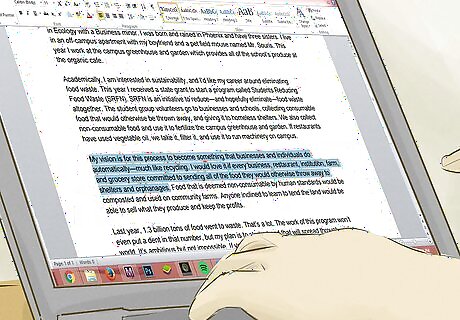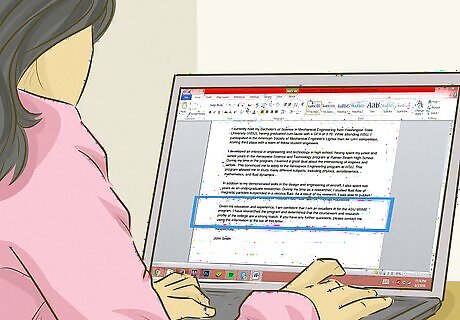
views
Emphasizing a Word in Text

Stick to italics or underlining in academic writing. In academic writing or professional writing, italics and underlining are usually the preferred means of emphasis. Italics are somewhat preferred, as underlining was mostly used in the age of typewriters, but check with your teacher or the publication first. Underlining may sometimes be the standard. For example, if you're trying to emphasize a major point in an academic paper, you could use italics in a sentence like, "This new study actually poses a major challenge to conventional medical practices." If you're writing a paper for class or a particular journal, check the publication. Sometimes, things like book titles may be underlined instead of italicized.

Opt for bold text for key information. Bold text is more often used in things like syllabi, instructions manuals, and other materials where key terms need emphasis. It's generally not used in academic or creative writing, but can be very useful when introducing key terms. For example, if you're writing instructions on how to assemble a vacuum cleaner, you may write something like, "The upholstery brush is then attached to the end of the nozzle."

Use exclamations points in informal or creative writing. Exclamation points are generally used sparingly, even in creative works. However, in dialogue especially, they can be used on occasion for major emphasis. Exclamation points usually indicate a change in tone, so you can add them to scenes or moments in creative works that are meant to be particularly dramatic. For example, you may use an exclamation point in a sentence like, "She screamed as he made his way to the train platform, 'Stop and listen to me!'" Exclamation points can come off as melodramatic if they're overused, so stick to using exclamation points for very big moments. If you're using text as a visual aid, such as in a presentation, try to incorporate other forms of emphasis such as using a bigger or bolded font, changing the spacing around the word, or changing the color of the word.
Emphasizing a Word in Speech

Slow down your rate of speech. As you're reaching the sentence that contains the important word, slow down your rate of speech. Slowed speech helps your audience catch every detail, indicating you're conveying important information.

Pause before the word you want to emphasize. If you want to emphasize a word in a speech, make a short pause just before introducing the term. This will grab your audience's attention, indicating important information is coming. Pause for a few seconds in your sentence just before introducing the important word. For example, in the sentence, "This new technique led to a 30% increase in sales." You want to emphasize the phrase "30% increase," so pause for a moment after "a."

Raise your voice only slightly. You do not want to yell, as this can startle your audience. However, raise your voice just slightly louder than your normal tone. This will let your audience know that the word you're saying is important. Make sure to pronounce each syllable as clearly as possible and elongate the important word.

Repeat the word for extra emphasis. It can sometimes help to repeat the word just once. This gives added emphasis to make sure your audience heard the key information. For example, "This new technique led to a 30% increase, a 30% increase, in sales this quarter."
Avoiding Pitfalls

Adhere to the style guide you're working within. While there are general rules of thumb to follow when it comes to emphasizing in writing, it's always best to follow the standard of the publication. If you're writing for school, ask your teacher how to emphasize words. If you're submitting to a magazine or other publication, browse that magazine to see their standard form for emphasizing words and terms. Some publications may have their own unique style, using unconventional means like quotation marks as emphasis.

Avoid all caps except in informal settings. Writing in caps lock for emphasis is generally considered poor writing. It can come off as yelling. Avoid all caps unless you're emphasizing words in a very informal setting, like an e-mail to a friend or a social media post.

Remain still when speaking. Many people have the inclination to pace while they're speaking. However, this makes you look nervous, which can take away from you emphasizing certain terms. It may also distract your audience. Instead of pacing, stand tall and still in a power stance. This will make you look more confident and draw more attention to the words you choose to emphasize.

Practice emphasis for big presentations. You should never go into a presentation without practicing your speech, including your use of emphasis. Practice in front of a mirror and in front of others. This will ensure you go into a speech confident and relaxed. To help you remember which words to emphasize as you practice your speech, try bolding certain terms or using ellipses around them as a visual signal in your notes or script.




















Comments
0 comment